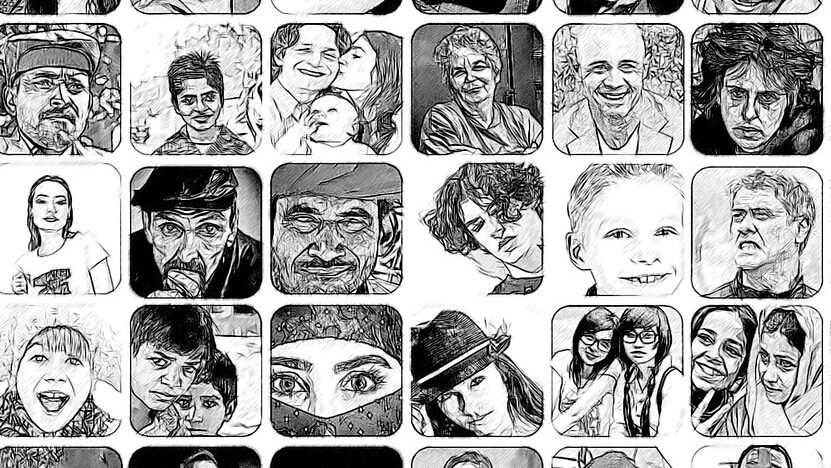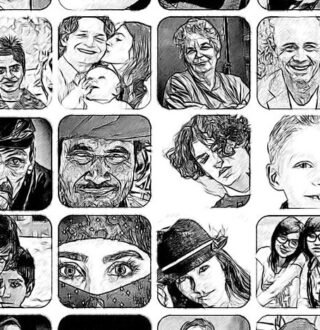
Alt text is a substitute for images. It should describe the most relevant info in the image. But when is skin tone, race, and ethnicity “relevant”?
Alternative text (alt text) is the short text that describes the relevant content of an image. It’s an essential part of digital accessibility, as it allows people who use assistive devices like screen readers or have low internet speed to “see” what is in the image.
Any image (or figure, diagram, graphic) that contains meaningful content needs to have alt text. (Here’s a good place to start for a refresher on alt text.)
So: should you mention race or ethnicity in alt text?
“Include what’s relevant”
When you write alt text, ask yourself: what is the most important thing in the image that the reader needs to know?
- If the image is purely decorative, the alt text can be left blank (or some say to add the word “null”).
- Remember that alt text is a substitute for the image, not a supplement. It’s not the place to put in your witty comments about the image—put those in the caption, image description, or the main text instead.
What’s important will depend on the context. So unless the context is specifically about race and ethnicity, we might say details about race and ethnicity are irrelevant and should not be mentioned in alt text.
But we may need to rethink this.
Normalize race by including it in alt text
What might you imagine with the following alt text?
A businesswoman speaks at a meeting table. Two other businesswomen and another businessman listen.
How about the next one:
A Black businesswoman with medium skin tone and straight light-brown hair speaks at a meeting table. Two white businesswomen and a South Asian businessman listen.1
Did that bring to mind a different scene?
I’m moved by accessibility leader Léonie Watson’s argument that when there’s no other information, we assume “normal” to be like ourselves. Similarly, accessibility advocate Tolu Adegbite says “Alt text forms part of that storytelling of a designed reality.” She writes:
“When we don’t describe the race of someone in an image, we push the narrative that what our society deems as the default (usually a white person), is the default.”
Tolu Adegbite, “The case for describing race in alternative text attributes,” 28 January 2022
And they both speak from lived experience as a blind person (Watson) and a Black woman (Adegbite).
To normalize a more diverse world, it may be important to include information about skin tone or ethnicity. (There are, of course, other dimensions of diversity such as age, disability, and gender.)
So how can we sensitively mention skin tone in alt text?
How to mention skin tone in alt text?
I’m the first to confess I don’t have a clear answer to this. But we might start from good practices in writing about skin tone, race, and ethnicity.
For example, be specific. Words like “BIPOC” or “BAME” do not describe a person. And “diverse” is only for a group of people, not individuals.
Context also matters. “BIPOC” is irrelevant outside of the US (and maybe Western, white-dominant contexts). In many countries/regions around the world, colorism—the shade of your skin—is a more dominant issue.
For skin tone, Accessible Publishing Learning Network suggests using:
- light skin tone
- medium-light skin tone
- medium skin tone
- medium-dark skin tone
- dark skin tone
If you use terms like Black, white, Southeast Asian and Middle Eastern, do so “only if this information is also given in the surrounding text” (from Best Practices for Writing Image Descriptions).
At the same time: don’t assume race or gender.
Also:
- Don’t compare people’s skin tone to food.
- Don’t use words that reflect value judgments, like “beautiful”. And please, no “exotic”!
What about saying someone’s nationality instead?
What about saying “Japanese” woman or “Kenyan woman” if you know their nationality? I admit I do this as an easy way out. But someone’s nationality doesn’t actually tell you the color of their skin. I know Japanese people who are blond-haired and blue-eyed Caucasians (and what about folks with dyed hair and color contact lenses 😵); I know others who are darker skinned and curly haired.
It’s not easy! I struggle with all this—but we can only try our best and bungle on …
The bonus: get better at writing clearly and concisely
Writing alt text is hard because we have to decide what details are the most important and to convey them as concisely as possible. But on the plus side, preparing alt text is a great way to hone our writing skills—all while making the digital space a more accessible one.
Resources
On alt text
- Best practices for writing image descriptions: A thorough and clear guide with examples on how to write alt text and image descriptions, from Accessible Publishing Learning Network.
- How to write alt text and image descriptions for the visually impaired (Perkins School for the Blind): Explains the difference between alt text and image descriptions.
- Basic accessibility on social media (Access Living): Step-by-step instructions for several social media platforms on how to add alt text.
- How to add alt text to Microsoft Word and PowerPoint (Microsoft)
- Make your document, presentation, and sheets more accessible (Google)
Also check out my handpicked resources on learning about accessibility.
On writing about race and ethnicity
- The Diversity Style Guide: Race/ethnicity glossary
- The Conscious Style Guide: Ethnicity, race + nationality
- Conscious Language (Crystal Shelley)
Want writing tips and updates on new content like this?
Plus: Explore my free downloads and connect with me on LinkedIn or Facebook.
Image by Gerd Altmann from Pixabay.

